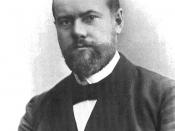Punishment Research Paper � PAGE \* MERGEFORMAT �5�
Future of Modernization
William Ward
Axia College of University of Phoenix
SOC120 Intro to Sociology
Yvonne Moore
March 16, 2008
�
�
Introduction
Modernization is the process of moving from farming and agricultural society to an industrial society and it mainly deals with societies after the Industrial Revolution of the mid-18th century. Some key features of modernization would be large, formal organizations and division of labor based on specialization of skills and abilities. There is more control over environmental resources such as oil, water, land, and animals. There is also a distinct improvement in the quality of life during this time. Because of a higher per capita income individuals are able to buy more goods and services, have more recreational time, and have better housing and health care. Modernization can have both positive and negative effects on society and can often bring about controversy.
Modernization
One prominent theory concerning modernization is its effects on community. The German sociologist Ferdinand Tönnies (1855-1937) formed two theories concerning modernization which he called Gemeinschaft and Gesellschaft. Ferdinand Tönnies viewed modernization as the progressive loss of human community - Gemeinschaft. He also believed the Industrial Revolution weakened the social bond of families and communities by emphasizing the impersonal business attributes like money, efficiency, and self-interest - Gesellschaft. Tönnies belief was that modernization turns societies inside out so that individuals are essentially separated in spite of uniting factors (Macionis, 2006, page 457).
Peter Berger, whose work was greatly influenced by Ferdinand Tönnies, identified four major characteristics of modernization:
The decline of small, traditional communities.
Life no longer centers around the family so much as it does work, also communities are centered around expansion and technology rather then neighborhood support. With technological advances in transportation,


